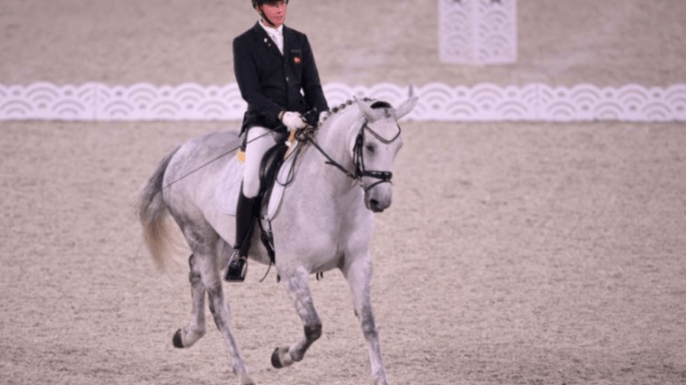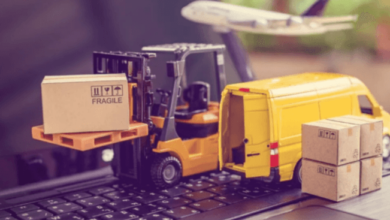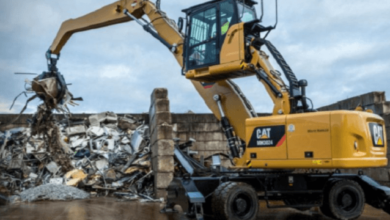How can adaptive equipment be used to assist para-equestrian athletes?

Introduction
Para-equestrian sports have opened doors for athletes with disabilities to engage in equestrian activities at competitive levels. Adaptive equipment plays a crucial role in enabling these athletes to perform at their best while ensuring their safety and comfort. This article explores the various types of adaptive equipment used in para-equestrian sports and how they contribute to the success of these remarkable athletes.
What is Adaptive Equipment?
Adaptive equipment refers to specially designed devices and modifications that assist individuals with disabilities in performing activities more effectively and safely. In the context of para-equestrian sports, this equipment is tailored to meet the unique needs of athletes, allowing them to ride and compete alongside able-bodied riders.
History of Adaptive Equipment in Para-Equestrian Sports
The development of adaptive equipment for para-equestrian sports has a rich history, marked by innovation and perseverance. Initially, makeshift solutions were used to accommodate riders’ needs, but over time, specialized equipment has been developed, leading to significant advancements in the sport.
Types of Adaptive Equipment
Adaptive equipment for para-equestrian athletes includes a wide range of devices designed to address specific challenges faced by riders. Key types include adaptive saddles, specialized reins, customized stirrups, and wheelchairs for equestrian use.
Adaptive Saddles
Features and Benefits: Adaptive saddles are designed to provide maximum support and comfort for riders with disabilities. They often include features such as adjustable seats, specialized padding, and secure fastenings to ensure the rider’s stability and safety.
Specialized Reins
Designs for Different Disabilities: Reins can be customized to accommodate various physical impairments. For instance, loop reins, ladder reins, and handhold reins are designed to offer better grip and control for riders with limited hand function.
Customized Stirrups
Safety and Comfort: Stirrups can be adapted to provide enhanced safety and comfort. Features such as wider footbeds, secure foot cages, and adjustable lengths help riders maintain proper posture and balance.
Wheelchairs for Equestrian Use
Mobility and Accessibility: Specialized wheelchairs designed for equestrian use facilitate easier mounting and dismounting. These wheelchairs are often equipped with features that allow them to navigate different terrains, ensuring athletes can move freely around the stables and arenas.
Technological Innovations
Advancements in technology have led to the development of highly sophisticated adaptive equipment. From sensor-embedded saddles to smart reins that provide feedback, these innovations are enhancing the capabilities of para-equestrian athletes.
How to Choose the Right Equipment
Factors to Consider: Selecting the right adaptive equipment involves considering factors such as the rider’s specific needs, the type of disability, and the level of competition. Consulting with professionals and trying out different equipment can help in making informed decisions.
Training with Adaptive Equipment
Techniques and Best Practices: Training with adaptive equipment requires tailored techniques that take into account the unique abilities of the athlete. Working with experienced coaches and therapists is essential to develop effective training routines.
Safety Measures
Ensuring Athlete and Horse Safety: Safety is paramount in para-equestrian sports. This section covers essential safety measures, including proper equipment maintenance, regular health checks for the horse, and emergency preparedness.
Case Studies
Success Stories of Para-Equestrian Athletes: Real-life examples of para-equestrian athletes who have achieved remarkable success with the help of adaptive equipment serve as inspiration and provide practical insights.
Benefits of Adaptive Equipment
Physical, Psychological, and Social Benefits: Adaptive equipment not only enhances physical performance but also boosts psychological well-being and social interaction. This section explores the holistic benefits of using adaptive equipment.
Challenges and Solutions
Overcoming Common Issues: Despite the advantages, para-equestrian athletes may face challenges such as equipment malfunctions or difficulty in customization. This section discusses common problems and offers solutions.
Role of Occupational Therapists
Assessments and Recommendations: Occupational therapists play a critical role in assessing the needs of para-equestrian athletes and recommending appropriate adaptive equipment. Their expertise ensures that the equipment is both functional and comfortable.
Collaboration with Equipment Manufacturers
Customization and Feedback: Ongoing collaboration with equipment manufacturers is vital for the continuous improvement of adaptive equipment. Feedback from athletes and coaches helps manufacturers refine their products.
Adaptive Equipment for Different Disabilities
Tailoring to Specific Needs: This section details how adaptive equipment is customized for different types of disabilities, ensuring that every athlete has the tools they need to succeed.
Impact on Competitive Performance
Enhancing Skills and Achievements: Adaptive equipment significantly impacts an athlete’s competitive performance, enabling them to refine their skills and achieve higher levels of success.
Funding and Support
Grants, Scholarships, and Sponsorships: Financial support is crucial for acquiring adaptive equipment. This section provides information on available grants, scholarships, and sponsorship opportunities.
Organizations Supporting Para-Equestrian Sports
Key Players and Their Roles: Various organizations are dedicated to supporting para-equestrian sports. This section highlights the key players and their contributions to the sport.
International Regulations
Governing Bodies and Standards: Understanding the international regulations and standards governing para-equestrian sports is essential for athletes competing at different levels.
Future Trends
Emerging Technologies and Practices: The future of adaptive equipment in para-equestrian sports looks promising, with emerging technologies and practices set to further enhance the sport.
Community and Peer Support
Building a Supportive Network: Building a strong community and peer support network is crucial for the well-being and success of para-equestrian athletes.
Personal Stories
Experiences of Para-Equestrian Athletes: Personal stories from para-equestrian athletes provide a glimpse into their journeys, challenges, and triumphs.
FAQs
How can adaptive equipment be used to assist para-equestrian athletes?
Adaptive equipment assists para-equestrian athletes by providing tailored solutions that accommodate their specific disabilities, enhance their riding capabilities, and ensure their safety. This includes specialized saddles, reins, stirrups, and wheelchairs designed to meet the unique needs of each athlete.
What types of adaptive equipment are available for para-equestrian sports?
There are various types of adaptive equipment available, including adaptive saddles with adjustable seats, specialized reins for better grip, customized stirrups for stability, and wheelchairs designed for equestrian use. Technological innovations have also introduced sensor-embedded saddles and smart reins.
How do adaptive saddles benefit para-equestrian athletes?
Adaptive saddles offer enhanced support, stability, and comfort for riders with disabilities. Features such as adjustable seating and specialized padding help ensure that the rider can maintain balance and control while riding.
What role do occupational therapists play in para-equestrian sports?
Occupational therapists assess the needs of para-equestrian athletes and recommend suitable adaptive equipment. They ensure that the equipment is functional, comfortable, and tailored to the specific needs of the athlete, thereby enhancing their performance and safety.
How can athletes choose the right adaptive equipment?
Choosing the right adaptive equipment involves considering factors such as the type of disability, the athlete’s specific needs, and the level of competition. Consulting with professionals, trying out different equipment, and receiving feedback from experienced riders and coaches are crucial steps in making an informed decision.
What are the benefits of using adaptive equipment in para-equestrian sports?
Adaptive equipment offers numerous benefits, including improved physical performance, increased safety, enhanced psychological well-being, and greater social interaction. It enables athletes to train more effectively, compete at higher levels, and enjoy a more inclusive and fulfilling riding experience.
Conclusion
Adaptive equipment is a game-changer in para-equestrian sports, providing athletes with the tools they need to excel. From specialized saddles and reins to innovative technological solutions, these devices enhance performance, ensure safety, and promote inclusivity. As the field continues to evolve, the future looks bright for para-equestrian athletes, who can look forward to even more advanced and effective adaptive equipment.





